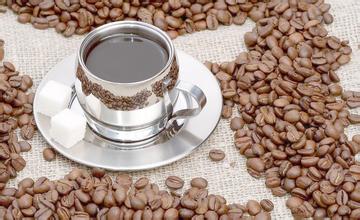Introduction to the Flavor description Manor of High-quality Coffee beans in Costa Rican Coffee Variety producing area
Civic Action Party (Partido Acción Ciudadana): Colombia's second largest political party, the opposition party. It was founded in December 2000 by Ottón Solís Fallas, and its supporters are mostly urban middle class. After its establishment, the party grew rapidly and changed the long-standing situation of alternating power between FNL and Christian Social Group Party. The party actively promotes citizens 'participation in national politics and construction, advocates a revolutionary political system, eradicates corruption and abuse of power for personal gain, advocates the development of national economy, and opposes neoliberalism and privatization of state-owned enterprises. The current party president Elizabeth Fonseca Corrales (female) and general secretary Margarita Bolaños Arquin (female) The current constitution entered into force on November 7, 1949. The Constitution stipulates that the State shall have a republican system of power with the separation of legislative, judicial and executive powers. The Office of the Comptroller-General and the Supreme Electoral Court are independent bodies. The president is the head of state and government and can stand for re-election every other term; the president and vice president are elected directly for a term of four years; in the absence of the president, the first vice president, the second vice president and the speaker take over in turn. In April 2003, Colombia amended the constitution again to allow the president to be re-elected for consecutive terms: the cabinet consists of two vice-presidents and 21 ministers, with the vice-president elected at the presidential election and the ministers appointed by the president. In the absence of the President, the first and second Vice Presidents and the Speaker of the House of Representatives shall succeed him at one time. In Solis 'cabinet, First Vice President and Finance Minister Elio, Second Vice President Anna Elena Chacon, Foreign Trade Minister Alexander, Economy, Industry and Commerce Minister Wilmo Ramos, Planning and Economic Policy Minister Olga Marta Sanchez, Public Works and Transportation Minister Ross Segnini, Central Bank Governor Oliver, National Electricity and Telecommunications Company President Carlos Manuel
Costa Rica's high latitudes produce coffee beans that are famous in the world for their rich, mild taste, but extremely sour, and the beans here are carefully processed to produce high-quality coffee. Costa Rica is located south of San José, the capital of Tarasu, and is one of the country's most valued coffee plantations. Tarrazu is one of the world's leading coffee producers.
Coffee is an important source of income for Costa Rica, introduced in 1808 and cultivated for 200 years. Costa Rica has a third of the population devoted to coffee
Coffee beans related industries, Costa Ricans say, coffee has changed the country, can enjoy a rich environment, coffee indeed outstanding contribution; although Costa Rica's land area ranked third in the bottom of the Central American narrow, but the economic environment is better than half of the countries, but also because of the rich people, social stability, but also spare energy to care about environmental issues, Costa Rica has more than 30 national parks.
Coffee was introduced to Costa Rica from Cuba in 1729, and today its coffee industry is one of the most well-organized in the world, producing up to 1700 kilograms per hectare. Costa Rica has a population of 3.5 million, but coffee trees number 400 million, and coffee exports account for 25% of the country's total exports. Costa Rica's volcanic soils are fertile and well drained, especially in the Central Plateau, where the soil consists of successive layers of ash and dust. Costa Rica was thus the first country in Central America to grow coffee and bananas for commercial value. Coffee and bananas are the country's main exports.
Located about 30 kilometers northeast of San Jose, Costa Rica's capital, the research center is part of the Costa Rican Coffee Association, Costa Rica's national coffee breed.
The newly developed villa sarchi is a research institute for planting, breeding and quality inspection. In addition, it has 10 hectares of experimental fields planted with several excellent varieties. Coffee is Costa Rica's main agricultural product, with an annual output of more than 2 million bags (60 kg) and an export earnings of 250 million US dollars, second only to pineapples and bananas.
In Costa Rica, Arabica coffee trees are grown, improved, the quality of coffee beans is better and more stable; in order to facilitate picking, coffee trees are continuously pruned to maintain a height of about 2 meters; people eat coffee is the fruit of the seeds released by water brewing flavor. After picking the green coffee beans, the seeds (i.e. coffee beans) can only be roasted after removing the peel, pulp, seed membrane and sunlight exposure. Now some processes can be replaced by machines, which increases the speed of coffee production. However, there is no machine for picking coffee beans, so manual work must be used.

Important Notice :
前街咖啡 FrontStreet Coffee has moved to new addredd:
FrontStreet Coffee Address: 315,Donghua East Road,GuangZhou
Tel:020 38364473
- Prev

Characteristics of Hawaiian Coffee Variety producing area introduction of Fine Coffee Bean Flavor Manor
The real Hawaiian Kona coffee makes people enjoy the unique pleasure and leads you slowly into the detached state of tasting coffee. And this comes entirely from the oldest Arabica coffee tree. Hawaii is the only state in the United States that grows coffee, which is grown on the five major islands of the Hawaiian Islands: Oahu, Hawaii, Maui, Kauai and Moroca.
- Next

Introduction to the characteristics of high-quality coffee beans with flavor and taste in Dominica coffee producing areas
In 1677, about 4,000 French lived in 11 villages in the west of the island. In 1697, France and Spain ceded the western part of the island to France according to the Leswick Treaty of the Alliance War, formally recognizing French sovereignty over Haiti in the western part of the Spanish island, and the eastern part of the Spanish island was called East Santo Domingo. France continues to develop its agricultural economy on the island of Hispaniola.
Related
- Detailed explanation of Jadeite planting Land in Panamanian Jadeite Manor introduction to the grading system of Jadeite competitive bidding, Red bid, Green bid and Rose Summer
- Story of Coffee planting in Brenka region of Costa Rica Stonehenge Manor anaerobic heavy honey treatment of flavor mouth
- What's on the barrel of Blue Mountain Coffee beans?
- Can American coffee also pull flowers? How to use hot American style to pull out a good-looking pattern?
- Can you make a cold extract with coffee beans? What is the right proportion for cold-extracted coffee formula?
- Indonesian PWN Gold Mandrine Coffee Origin Features Flavor How to Chong? Mandolin coffee is American.
- A brief introduction to the flavor characteristics of Brazilian yellow bourbon coffee beans
- What is the effect of different water quality on the flavor of cold-extracted coffee? What kind of water is best for brewing coffee?
- Why do you think of Rose Summer whenever you mention Panamanian coffee?
- Introduction to the characteristics of authentic blue mountain coffee bean producing areas? What is the CIB Coffee Authority in Jamaica?

